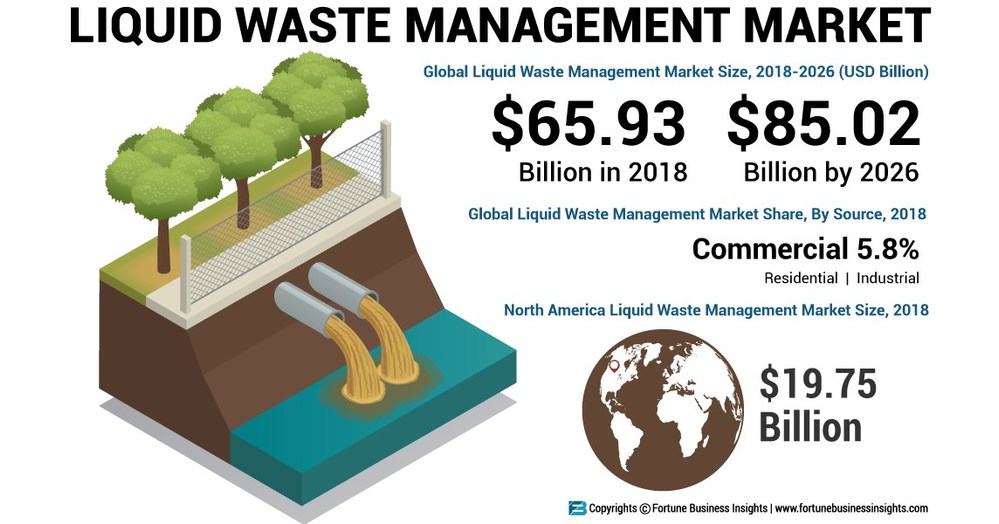Reclaim Waste - An Overview
Reclaim Waste - An Overview
Blog Article
More About Reclaim Waste
Table of ContentsReclaim Waste Can Be Fun For AnyoneSome Known Details About Reclaim Waste Little Known Facts About Reclaim Waste.The Ultimate Guide To Reclaim WasteReclaim Waste Fundamentals Explained
Discover the kinds, occurrences, and kinds of fluid waste. Domestic sewer waste describes the waste and items from a residential septic tank. This kind of waste is produced by people in houses, institutions, and various other structures. This only consists of septic tanks that have a drain area. The proper management and disposal of residential sewer waste call for liquid waste to be moved to a sewage treatment plant where the appropriate methods and tools are related to cleanse and get rid of waste.
Business waste often includes potential risks, such as combustible materials or a blend of liquid and solid waste products, and requires a more innovative and comprehensive disposal process. The disposal of industrial waste usually entails the filtering of waste prior to transport to make certain safe and correct disposal. Hazardous waste is developed from byproducts and overflow of industrial processes and production.
This type of waste can not make use of the very same sewer management transportation or processes as septic or commercial liquids. The hazardous waste management process requires the inspection and testing of liquid waste before it goes through the disposal procedure (industrial wastewater treatment). Runoff waste is the liquid waste that comes from runoff and excess stormwater in extremely inhabited areas or cities
Overflow waste can trigger contamination and flooding if not taken care of correctly. Making certain proper waste management can protect against catastrophes and lower ecological damage.
The Greatest Guide To Reclaim Waste
Call PROS Services today to discover about our waste monitoring and disposal services and the proper methods to look after the fluid waste you create.
(https://reclaimwaste1.blog.ss-blog.jp/2024-11-12?1731425991)This supposed 'wastewater' is not just a vital source however, after treatment, will certainly be released to our land, rivers or the sea. Made use of water from bathrooms, showers, baths, kitchen sinks, laundries and commercial processes is recognized as wastewater.

water used to cool down equipment or clean plant and devices). Stormwater, a form of wastewater, is drainage that streams from farming and urban locations such as roof coverings, parks, gardens, roadways, paths and seamless gutters into stormwater drains pipes, after rainfall. Stormwater streams without treatment straight to local creeks or rivers, at some point reaching the sea.
Reclaim Waste for Dummies
In Queensland, many wastewater is treated at sewer therapy plants. Wastewater is carried from residential or commercial websites via a system of sewers and pump stations, called sewage reticulation, to a sewer therapy plant. Local governments build, maintain and operate most sewage treatment plants. Operators are licensed under the Environmental Management Act 1994 to discharge treated wastewater at an acceptable ecological requirement into waterways.
The Division of Natural Resources encourages regional governments about handling, operating and keeping sewage systems and therapy plants. In unsewered areas, city governments might call for homeowners to set up specific or family sewage therapy systems to deal with domestic wastewater from toilets, kitchens, bathrooms and washings. The Department of Natural Resources authorizes the usage of home systems when they are shown to be efficient.
In some new communities, treatment of some stormwater to get rid of trash, sand and gravel has actually begun making use of gross toxin traps. Wastewater treatment takes place in four phases: Eliminates strong issue.
Makes use of tiny living microorganisms recognizes as micro-organisms to break down and eliminate continuing to be dissolved wastes and fine bits. Micro-organisms and wastes are included in the sludge.
5 Easy Facts About Reclaim Waste Described
Nutrient elimination is not readily available in all sewage therapy plants due to the fact that it requires pricey specialized tools. It is becoming much more common in Queensland. Clear liquid effluent produced after treatment may still contain disease-causing micro-organisms. If this effluent is launched into waterways such as rivers or the sea, the micro-organisms will eventually die out.

Most wastewater flows into the sewage system. Under the Act, neighborhood governments administer approvals and licences for ecologically relevant activities (Periods) including wastewater launches that may have a local other effect.
Everything about Reclaim Waste
Tracking supplies accurate info regarding water top quality and can validate that permit problems are being fulfilled. The details obtained with monitoring supplies the basis for making water top quality choices.
Report this page